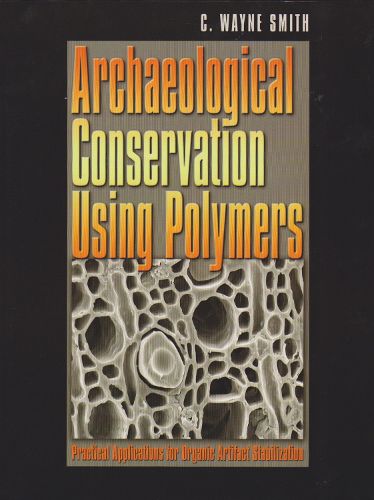Readings Newsletter
Become a Readings Member to make your shopping experience even easier.
Sign in or sign up for free!
You’re not far away from qualifying for FREE standard shipping within Australia
You’ve qualified for FREE standard shipping within Australia
The cart is loading…






Over the years, archaeologists have developed a number of techniques for conserving historical artifacts for future generations. Up to now, however, these methods have provided artifacts only a limited lifespan and in some cases they do not work well with water-logged materials. Within the past few years, archaeological chemistry and concerns of longevity testing have become central issues in the development of conservation treatment strategies. This problem became particularly acute when members of the Texas A&M Nautical Archaeology Program were called on to conserve artifacts on
LaBelle , the sunken ship of La Salle excavated in the 1990s off the coast of Texas by the Texas Historical Commission. Working with Dow Corning Corporation, Texas A&M’s Archaeological Preservation Research Lab, and the Conservation Research Lab, C. Wayne Smith and his colleagues set out to develop a series of techniques that would yield successful and affordable treatment strategies for organic artifacts without sacrificing important information. In this work, C. Wayne Smith prescribes an effective layout for day-to-day conservation of small organic artifacts and then examines some of the techniques used to process various organic materials from marine and land sites.
$9.00 standard shipping within Australia
FREE standard shipping within Australia for orders over $100.00
Express & International shipping calculated at checkout
Over the years, archaeologists have developed a number of techniques for conserving historical artifacts for future generations. Up to now, however, these methods have provided artifacts only a limited lifespan and in some cases they do not work well with water-logged materials. Within the past few years, archaeological chemistry and concerns of longevity testing have become central issues in the development of conservation treatment strategies. This problem became particularly acute when members of the Texas A&M Nautical Archaeology Program were called on to conserve artifacts on
LaBelle , the sunken ship of La Salle excavated in the 1990s off the coast of Texas by the Texas Historical Commission. Working with Dow Corning Corporation, Texas A&M’s Archaeological Preservation Research Lab, and the Conservation Research Lab, C. Wayne Smith and his colleagues set out to develop a series of techniques that would yield successful and affordable treatment strategies for organic artifacts without sacrificing important information. In this work, C. Wayne Smith prescribes an effective layout for day-to-day conservation of small organic artifacts and then examines some of the techniques used to process various organic materials from marine and land sites.